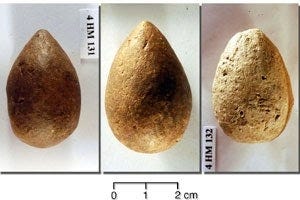Prehistoric Siegecraft
The first cities under fire
According to Clemens Reichel, an archaeologist at the Oriental Institute, the entire area dug up during 2005 excavations at the ancient city of Tell Hamoukar was “a war zone.” About half a square mile (~15 hectares) in size, the city’s ten-foot (3 meter) high circular mud brick wall was not tall enough for defense, nor do I see evidence of projecting to…



